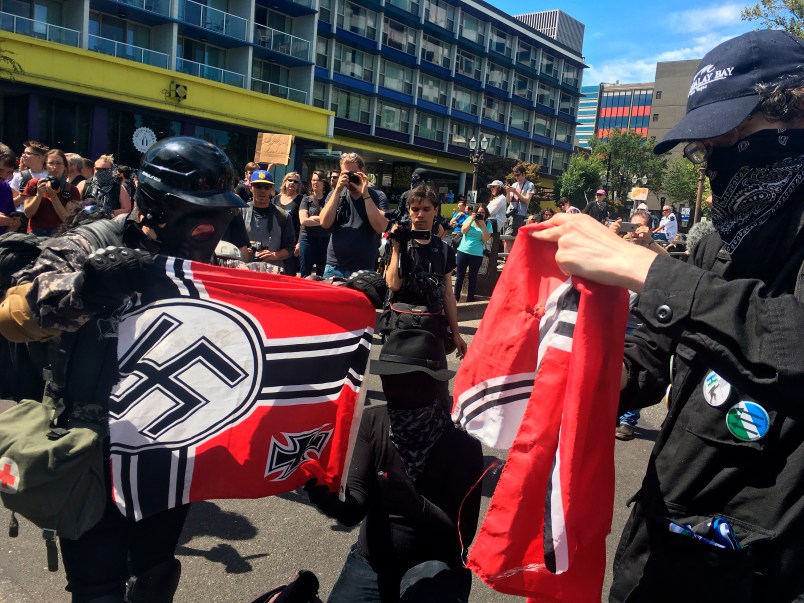The number of active hate groups in the United States soared to a “record high” of 1,020 in 2018, according to the Southern Poverty Law Center’s latest “Year in Hate” report.
The report, released Wednesday, found that groups pushing racist, anti-LGBT, anti-immigrant and anti-Muslim ideologies proliferated in the second year of Donald Trump’s presidency, fueled by the verbal validation and concrete policies of the administration and its allies.
“The numbers tell a striking story – that this president is not simply a polarizing figure but a radicalizing one,” Heidi Beirich, director of the SPLC’s Intelligence Project, said in a statement. “Rather than trying to tamp down hate, as presidents of both parties have done, President Trump elevates it.”
In 2018, the U.S. saw the fourth straight year of hate group growth and a 7 percent increase over the 954 groups counted in 2017, according to the SPLC.
The SPLC defines hate groups as organizations that target an entire class of people based on their race, religion or other identifying characteristics; only groups that participate in activities like “marches, rallies, speeches, meetings, leafleting, publishing literature or criminal acts” are included in their annual count.
Per the SPLC’s research, concerns of an “accelerating, state- and Silicon Valley-orchestrated ‘white genocide’” escalated the spike in white supremacist hatred last year. Trump’s failure to build a wall on the U.S.-Mexico border and the banning of white nationalists from social media platforms contributed to these enduring race-based fears.
At the same time, hatred was reinforced and codified in key Trump administration policies, from the forced separation of immigrant families at the border to the ban on transgender people serving in the military, the report noted. Staffers for virulently anti-immigrant groups like the Federation for American Immigration Reform and Center for Immigration Studies were given high-level posts in the Trump administration, while anti-LGBT groups like the Family Research Council regularly meet with Trump appointees.
The SPLC blames Trump’s allies in the conservative media, particularly Fox News’ Tucker Carlson and Laura Ingraham, for spreading fears of demographic change to a broader audience.
By the SPLC’s count, the greatest spike in hate group chapters came from “white supremacist groups birthed in the age of Trump,” like Identity Europa and Atomwaffen Division. Black nationalist hate groups grew as well, but, as the report notes, “black nationalists have little or no impact on mainstream politics and no defenders in high office.”
The climax of “radical right” violence came in the hectic weeks before the November midterm elections, with Cesar Sayoc mailing pipe bombs to Trump critics and anti-Semite Robert Bowers murdering 11 people at a Pittsburgh synagogue. In total, the SPLC found that white supremacists killed at least 40 people in the U.S. and Canada last year—up from 17 in 2017.
And 2019 will likely look much the same, according to the SPLC.
“In the absence of major policy shifts to the hard right, such as the building of a border wall, the radical right is poised to continue seething over its fears of ‘white genocide’ as it fearfully anticipates a multicultural wave washing it out,” the report predicts.






